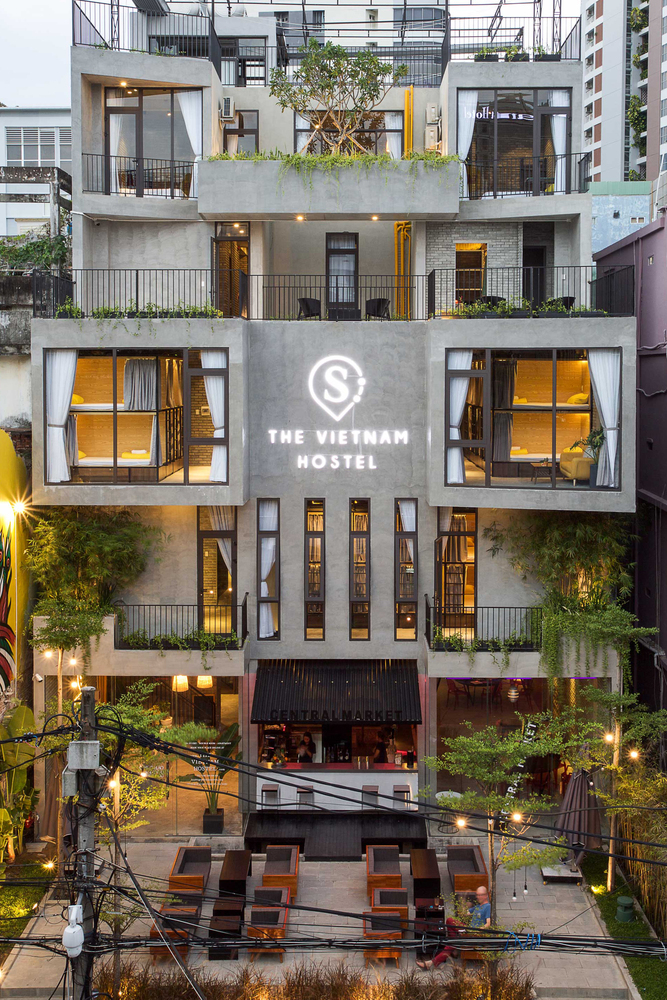Doughnut House Naoi Architecture - Design Office
2011-08-18 00:00
架构师提供的文本描述。这个项目是一对夫妻夫妇居住在茨城县农村的住宅.这个大面积的地块周围的区域并没有被大量建造起来,这给了网站一种平静的隐私感,没有太多的噪音、犯罪威胁和其他与城市相关的压力。邻近地区是由田地和房屋混合而成的,其中许多位于彼此没有明确划定边界的地块上。考虑到这些条件,我们决定建立一个由“边界和边界模糊的开放空间”组成的家园。
Text description provided by the architects. This project was a residential building for a husband-and-wife couple in rural Ibaraki prefecture. The area surrounding the generously-sized plot was not heavily built up, giving the site a calm sense of privacy without too much of the noise, threat of crime and other stresses associated with the city. The adjacent areas consisted of a mix of fields and houses, many of which were located on plots of land whose boundaries were not clearly demarcated from each other. With these conditions in mind, we decided to create a home that would consist of “an open space with ambiguous borders and boundaries.”
我们一开始就用绿色植物和堤坝包围周围,以松散的方式划定地界,并建造了一栋一层高的房子,由他们盖住并隐藏起来。通过这种方式,我们能够创建一个网站,它的内部和外部没有任何区别,或者建筑和周围环境之间没有任何区别。路堤起到催化剂的作用,产生景观的变化,从内部可见,以及从房子外面的看法。
We started by encircling the perimeter of the site with greenery and embankments in order to demarcate the boundaries of the property in a loose fashion, and built a one-story house that would be covered and hidden by them. In this way, we were able to create a site that makes no distinctions whatsoever between its interior and exterior, or between the architecture and its surrounding environment. The embankments serve as a catalyst to produce changes in the landscape visible from the interior, as well as the view from the outside of the house.
平地平面结构为住宅提供了功能布局,而内部庭院在住宅内部产生了深度和流动性的感觉。庭院位于离屋顶中心稍远的地方,它还会使天花板的坡度和房间的结构发生变化,使房子的整体空间属性产生微妙的等级。
The flat, level surface of the site gives the residence a functional layout, while the internal courtyard produces a sensation of depth and fluidity within the house. Situated at a slight distance from the center of the roof, the courtyard also produces variations in the gradient of the ceiling and configuration of the rooms, giving rise to subtle gradations in the overall spatial properties of the house.
内部庭院和屋檐下的各种空间重申了内部和外部之间的对话感,允许阳光和风穿过空间。我们还使用各种配件,屋檐和泥土地板作为工具,操纵内部的边界,这既保持了距离的感觉,以及与其有一定的关系。通过强调屋面的支撑功能,保持所有的滑动门和其他配件完全打开,房屋内部获得了一定的空间强度。从外面看,另一方面,给人的印象是一个宽的披风覆盖整个房子。所有这些措施使我们能够确保住宅具有宽敞舒适的感觉,自然和建筑都被赋予同等的价值。
A sense of dialogue between the interior and exterior is reiterated in the internal courtyard and various spaces underneath the eaves of the roof, allowing sunlight and wind to pass through the space. We also used the various fittings, eaves and dirt floor as tools for manipulating the boundaries within the house, which maintained both a sense of distance from its surroundings as well as a certain relationship to them. By emphasizing the supporting function of the roof and keeping all the sliding doors and other fittings fully open, the interior of the house acquires a certain spatial intensity. The view from the outside, on the other hand, gives the impression of a wide mantle that covers the entire house. All of these measures allowed us to ensure that the residence would have a sense of spacious comfort where both nature and architecture are accorded equal value.
今后,我们希望继续建造有利于这种奢侈和舒适的住宅,创造一种简单的建筑,力求积极地迎接四季的变化、气候的变化以及与自然共生关系中时间的流逝,所有这些都不需要依靠最新的建筑技术、机械和设备。
In the future, we hope to continue building homes conducive to this sort of luxury and comfort, creating a simple sort of architecture that seeks to actively open itself up to changes in the four seasons, shifts in the weather and the passage of time in a symbiotic relationship with nature, all without having to rely on the latest building technologies, machinery and devices.
 举报
举报
别默默的看了,快登录帮我评论一下吧!:)
注册
登录
更多评论
相关文章
-

描边风设计中,最容易犯的8种问题分析
2018年走过了四分之一,LOGO设计趋势也清晰了LOGO设计
-

描边风设计中,最容易犯的8种问题分析
2018年走过了四分之一,LOGO设计趋势也清晰了LOGO设计
-

描边风设计中,最容易犯的8种问题分析
2018年走过了四分之一,LOGO设计趋势也清晰了LOGO设计












































































